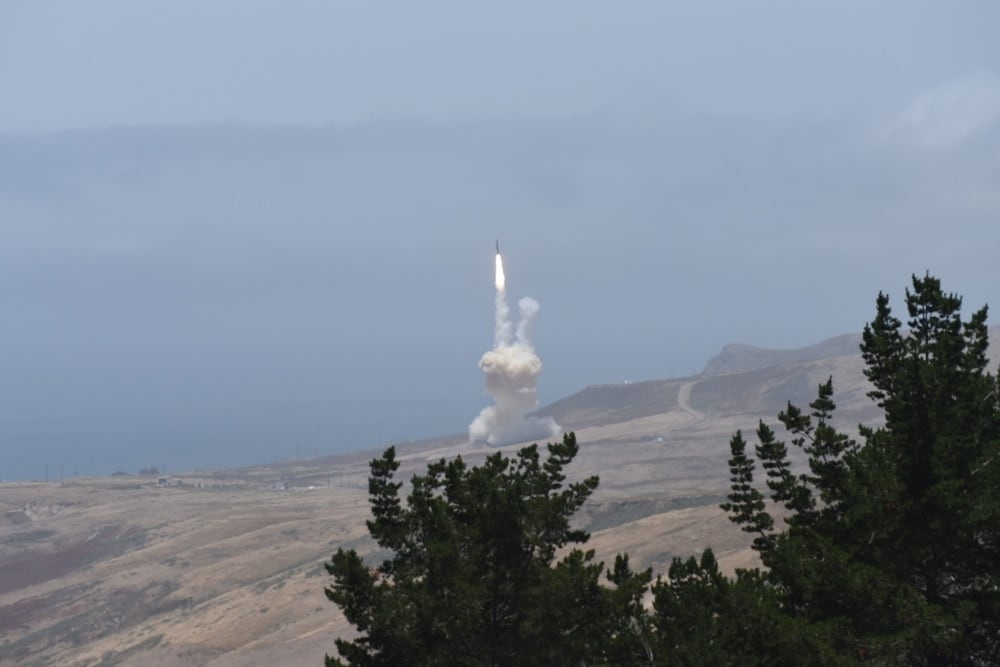The recent wail of a nuclear attack warning test throughout Hawaii and the latest North Korean missile test should be enough to disabuse the U.S. security community of any sense of immunity to attack at home. With the new capabilities the launch demonstrated, countering North Korean ballistic missiles is an urgent strategic and operational priority — but that is only one aspect of the broader threat of missiles against the U.S. military forces and, just as important, the homeland.
Despite significant investment in ballistic missile defenses, much of the U.S. remains at risk — not just to North Korea but to Russian, Chinese and Iranian missiles. The same countries are developing advanced cruise missile capabilities, and the Russians and others look to sell their missiles on the international market. According to a report prepared by the National Air and Space Intelligence Center, ballistic and cruise missiles, “with their relatively low operating costs, their potential to penetrate defense systems … will continue to be the offensive weapons of choice for many nations.”
The military services have the responsibility to organize, train and equip their forces for missile defense, and the combatant commanders to execute defense operations. But what about the homeland? The threat is not just against U.S. military forces, and the country needs a comprehensive homeland missile defense plan, or CHMD, with associated policy and programs that will implement the plan and address threats that will certainly advance, proliferate and expand the risk to the United States.
A thoughtful adversary may not choose to take the military head-on. When President Donald Trump’s first National Security Strategy and Ballistic Missile Defense Review are released later this year, those documents must serve as a starting point for a concerted, strategic and sustained effort to improve overall missile defense for the homeland. A comprehensive program to improve the protection of the United States from ballistic and cruise missile attack is imperative. This program must extend beyond the current immediacy of efforts to counter North Korean developments. This effort needs to be truly strategic and sustained for years to come. For two centuries, the U.S. homeland provided relative sanctuary from outside threats. Sept. 11, 2001, subsequent terror attacks and North Korean developments have pushed that notion aside, and the full range of missile threats must be addressed.
The U.S. has made significant improvements in ballistic missile defense, fielding more ground-based interceptors and continuing investment in key systems like Aegis, SM-3 and Terminal High Altitude Area Defense but focused the last three on defense of fielded forces, not the United States.
Investment must continue with greater emphasis on comprehensive defense of the homeland. Furthermore, a new approach to development and acquisition of missile defense ― long hamstrung by starts and stops based on year-to-year acquisition ― must be modified to allow multiyear procurement enabling real, sustained progress. Robust test and evaluation without the pursuit of perfection: The cabal of missile defense critics like Philip Coyle of The Center for Arms Control and Non-Proliferation advocate fly-before-you-buy testing. In theory, this approach is more frugal and guarantees real capability. In reality, however, it will ensure that the U.S. continues to lag behind developing capabilities.
RELATED

Regarding the cruise missile threat, the only area in the homeland currently protected is Washington, D.C. A program of record dedicated to cruise missile defense is needed to focus the effort. As a start to expanding CMDH, a top priority must be the defense of key U.S. ports. The Russians have marketed cruise missiles in shipping containers; the effect of a strike against a major port would be devastating. The port at Los Angeles, for example, handled 4.4 million container equivalents in 2015, ample opportunity for a determined enemy to infiltrate one or many more cruise missiles within range.
Having the strategy is not enough. The government must have supporting policies including assigning operational responsibility and clearly defining engagement authority. Ballistic and cruise missile defense are two different challenges technically and tactically. The authorities for missile defense are divided piecemeal between multiple commands and agencies. If there was ever a situation where unity of command matters, this is it. In the event of a missile attack, there will not be time to decide who is going to decide.
North Korea and terrorism are clear and immediate dangers, but the missile threat to the homeland must be a long-term concern countered with a comprehensive homeland missile defense plan from the Department of Defense and supported by the administration and lawmakers. This CMHD should be a key element of the follow-up to the new National Defense Strategy.
RELATED

Retired Lt. Gen. Dan Leaf served in the U.S. Air Force as a fighter pilot. He last served on active duty as deputy commander of U.S. Pacific Command and was vice commander of Air Force Space Command. He later returned to public service as the director of the Defense Department’s Daniel K. Inouye Asia-Pacific Center for Security Studies. He is currently the managing director of Phase Minus 1, a conflict resolution and security consulting company.








